Quick Start
We would like to rocket fast guide you through the initial steps of using the LEXIS platform via the web portal. Our goal is to help you get the basics quickly with some prepared examples.
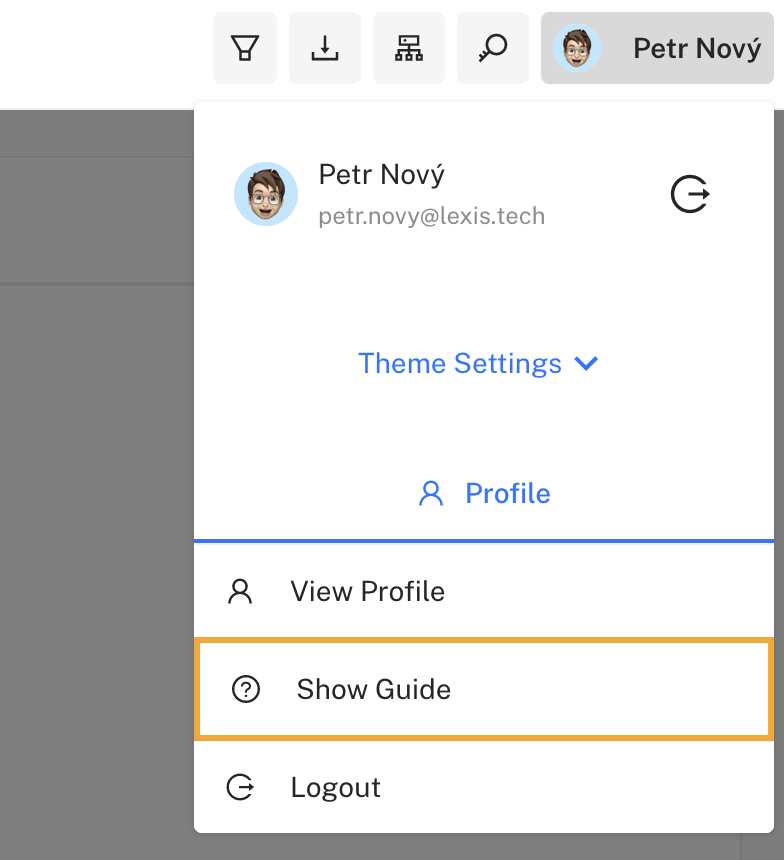
You can also view our guided tour that will quickly introduce you to all the important stuff. It can be optionally opened in the top right submenu. So without further ado, lets get to supercomputing!
Before even getting to the portal, you are required to log in to your user account. The login button can be found in the top right corner at portal.lexis.tech. To log in, you can use either MyAccessID (eduGAIN, eIDAS), or B2ACCESS (eduGAIN, ORCID and Social Identities).
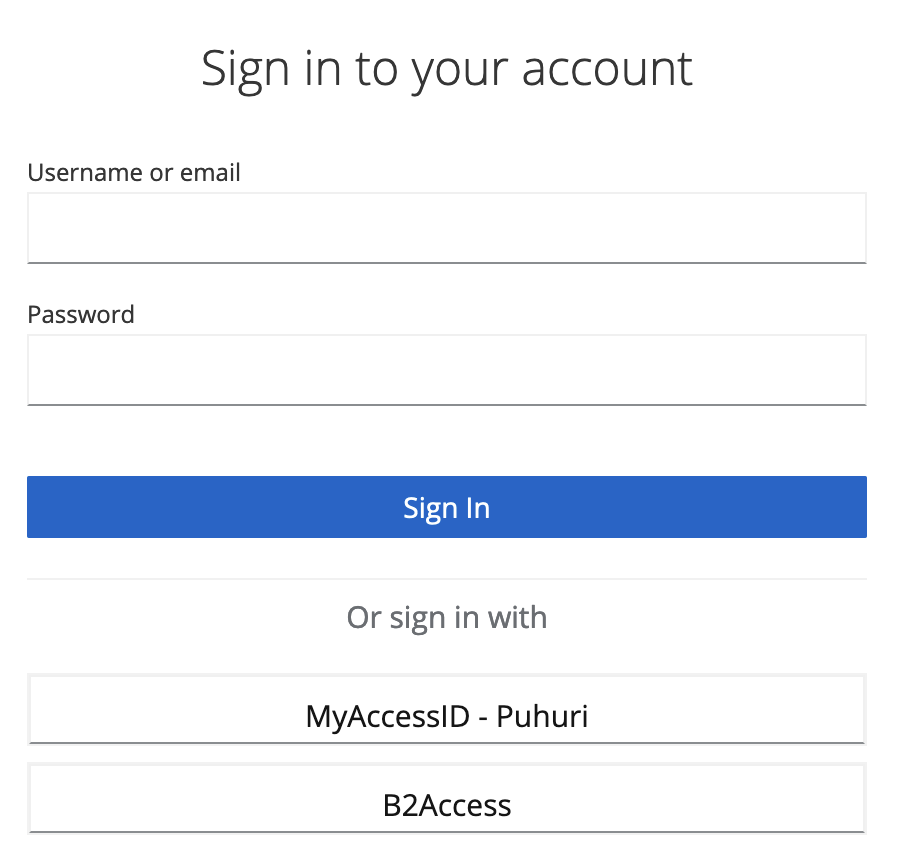
After logging in, you need to request an access to a LEXIS Demonstration Project. To do this, click on the blue button in the middle of the screen, or go to Projects in the navigation menu on the left and then click the blue button on the right side.

A window will pop up. Enter ‘demo_project’ and wait a while until you are granted an access. This project contains all the necessary components so you can get right to the supercomputing.
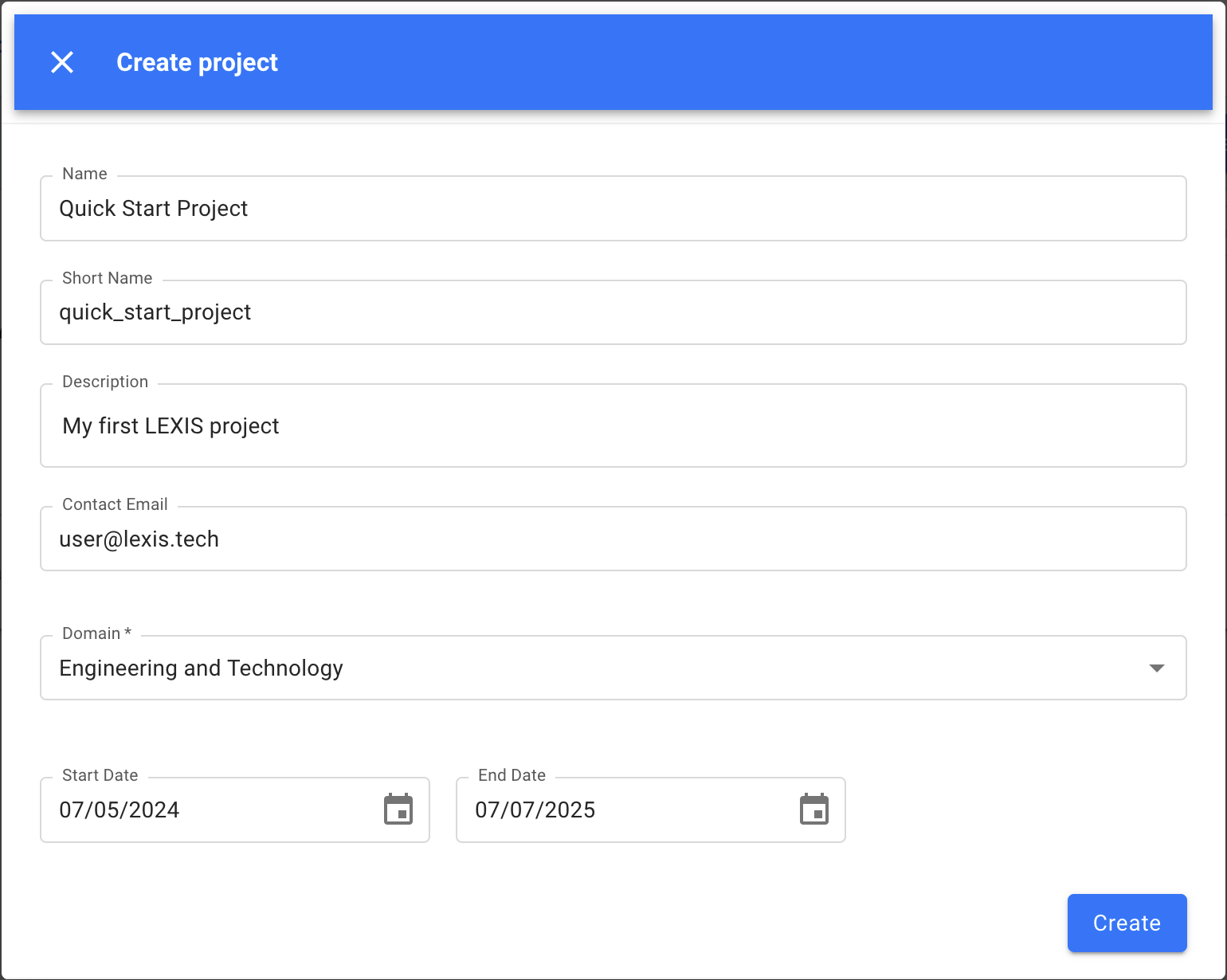
We can now try running one HPC job. Navigate to Applications/Custom HPC Jobs to find prepared Estimate PI in R job. Click on the little down arrow to see the content of the Job script. Now click on the green button Create Workflow.
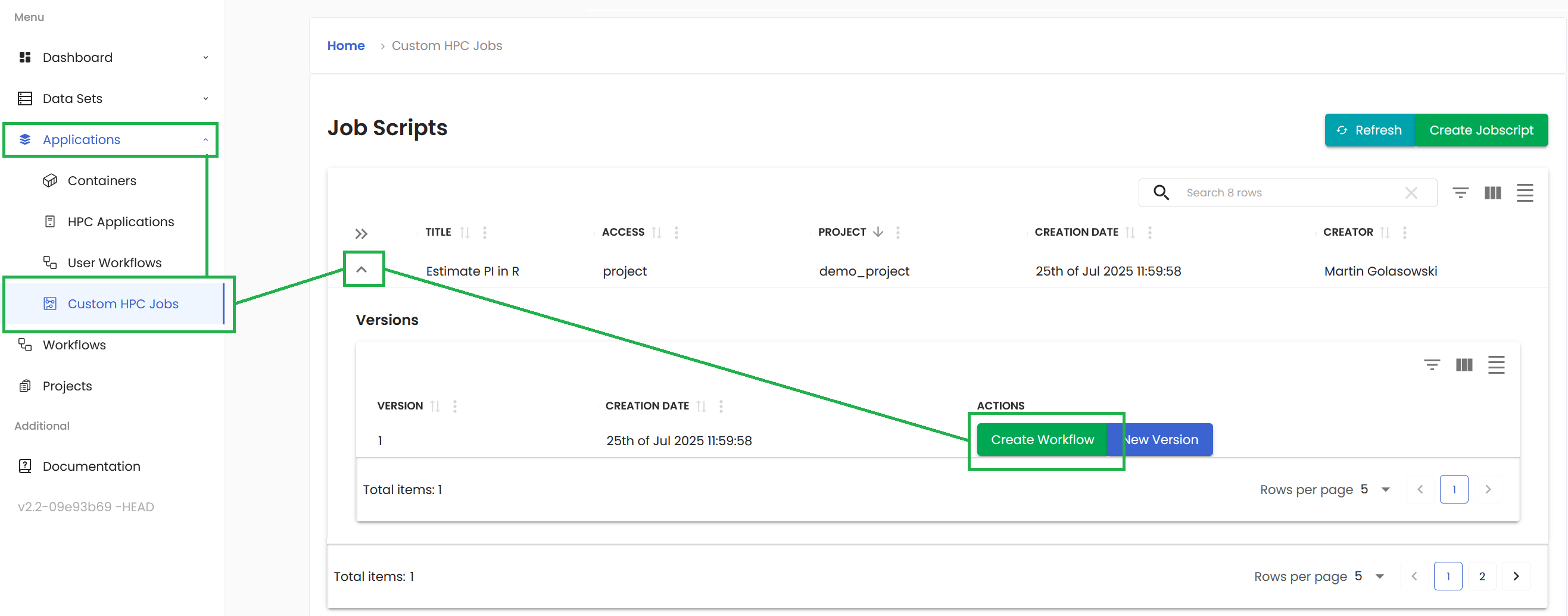
You can see the script written in R language. This is the script we want to run. As the name suggests, it tries to estimate the number \(\pi\). If you are familiar with the R language, you can check the code. Otherwise, let’s get to running it. Fill in the name and optionally add some description, then Continue.

Choose the cluster (Barbora) and partition (qcpu). Right now, we won’t concern ourselves with other options and Continue.
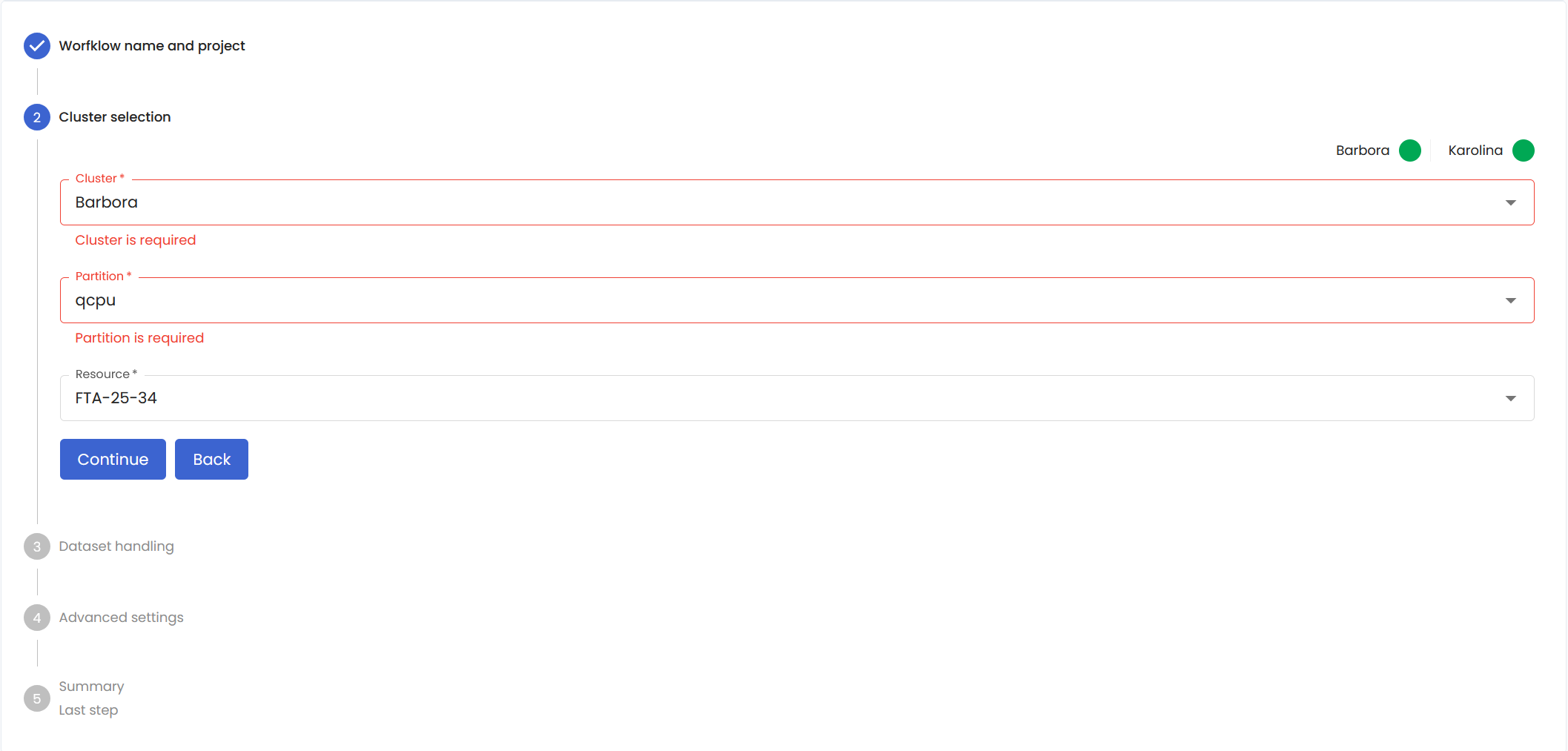
Here, we leave all two options unchecked and Continue again.
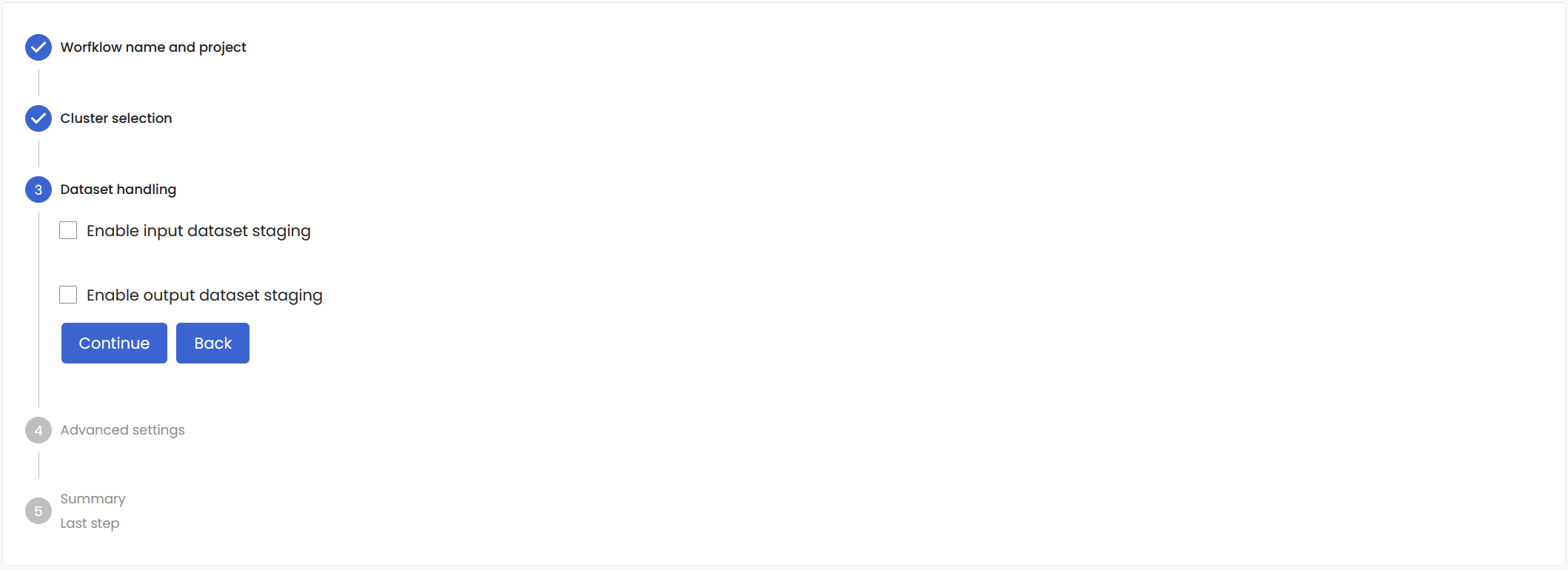
On Advanced options, we won’t make any changes and Continue for the last time.
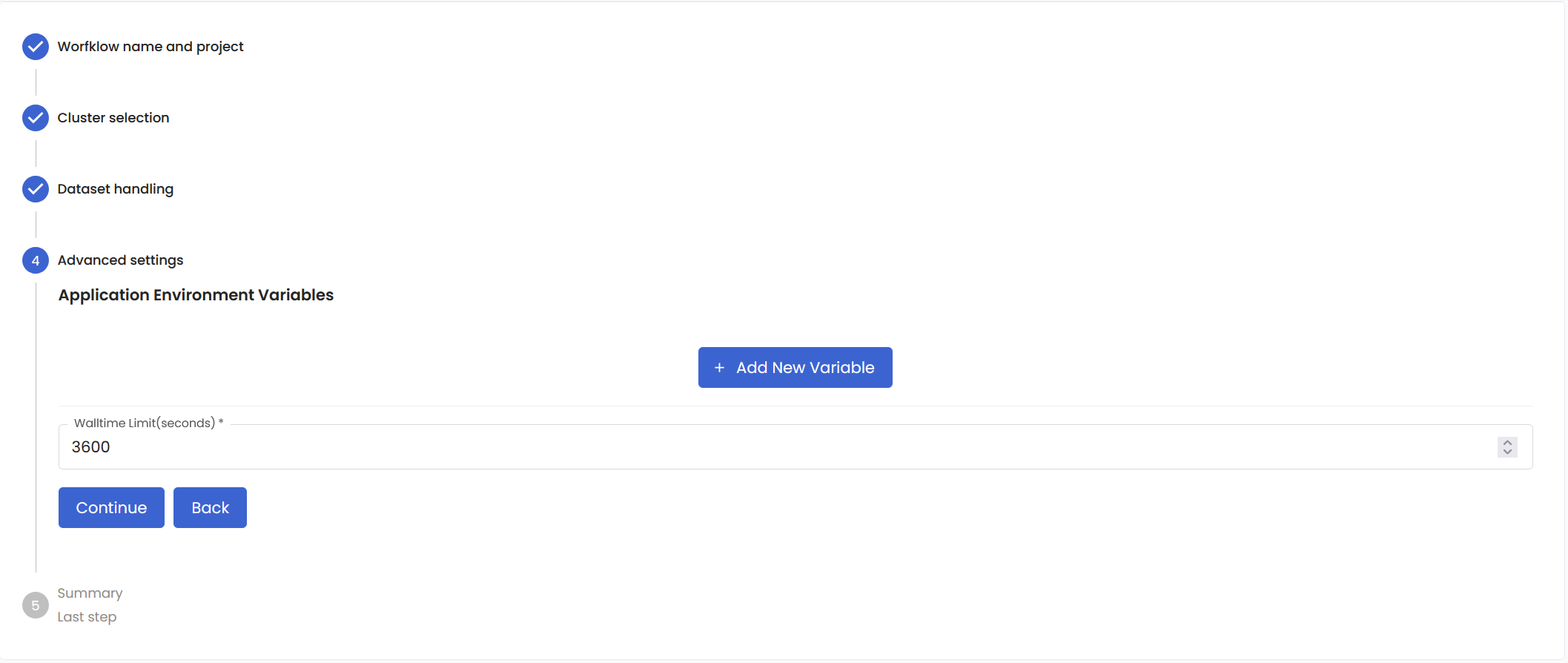
We can see the summary of everything we entered and now we can Create the Workflow.
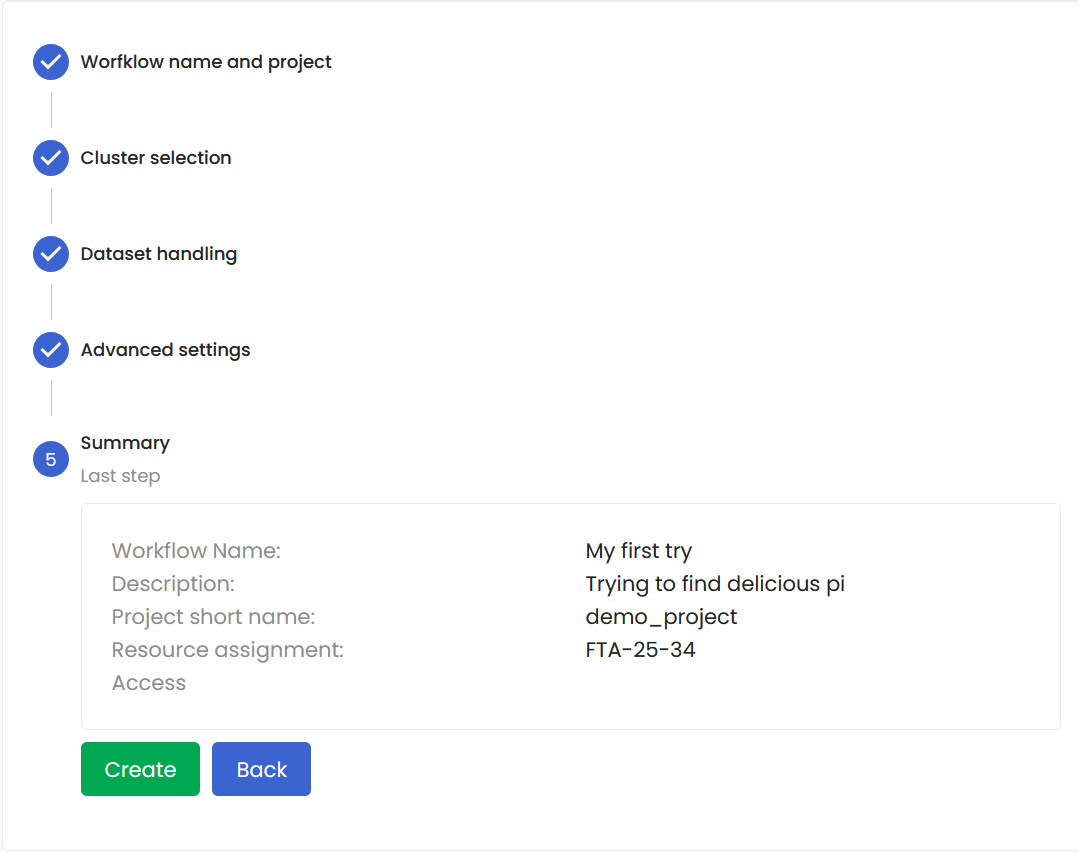
The Workflow we created is found under Workflows menu. Click on the magnifying glass icon to show the details for this workflow.

There is the green Create Workflow Execution button we’re going to click on.

We give a name to our execution of this workflow and as there is no input file needed, we Continue and Continue again. On this last part, we see a summary for this workflow and as we do not want to change anything, we click on the green Create button at the bottom.

And now we see our workflow is running!

This was just a simple showcase of how to get basic things working. If you are interested in creating your own jobscripts, uploading your own datasets, and others, check the comprehensive How-to Guide!